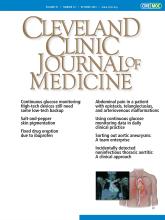
It doesn’t take a lot of reflection to appreciate the dramatic effect that technology has played in reshaping our day-to-day behaviors. We carry computers in our pockets that can answer our verbalized questions that range from grocery store hours to the impact of MTHFR polymorphisms on the risk of developing psychiatric disorders. We don’t need to carry change to use a “pay phone” to make an emergency call, and certainly don’t need to consult a map or stop at a gas station to ask for directions (which of course many of us carrying the Y chromosome rarely did anyway).
But what happens when technology fails us—our phone battery dies and there is no available charger, or we enter the twilight zone where there is no signal? Without my phone, navigating beyond my home and work neighborhoods often becomes a challenge. I need to consciously think through potential driving routes, and I rarely can rely on visual clues because when I drive now I respond instead to the audible instructions issued in an Australian accent by my phone-based GPS app while focusing on the car in front of me. As inconvenient and potentially embarrassing as phone failures may be, they are not health-threatening, while failures of medical technologies that many of us increasingly rely upon on a day-to-day basis can be. And what if we don’t recognize that our health monitoring device has not completely “failed,” but is malfunctioning and is providing us with inaccurate data?
I recently got a phone call from my brother-in-law about his blood glucose “numbers.” When he is not playing tennis, he works as a consultant for various companies analyzing large data sets. He has late-onset autoimmune diabetes for which he takes a cocktail of insulins and other medications, keeping his hemoglobin A1c around 6%. He called to discuss his suddenly out-of-control glucose “numbers,” which included an early-morning value around 300 mg/dL that was not the result of a midnight Twinkie break. He had no symptoms (or monitor-reported glucose values) to suggest that these reflected a Somogyi effect, and, other than having been playing tennis outside in temperatures hovering in the high-90°F range, he had no reason to suspect a cognitive, behavioral, or systemic problem that might explain the hyperglycemia. A short chat and the mutual recognition that the “numbers” had not changed as they should have with an extra self-administered dose of short-acting insulin and a brisk walk led to him finding a lancet and test strip and discovering that his actual blood sugar was under 100 mg/dL. This was a sensor malfunction, not a primary medical issue.
Written instructions that come with the sensor and clinical practice guidelines recommend checking a fingerstick capillary glucose level when the monitor reports glucose values that don’t jibe with symptoms or expectations. Even so, we wondered out loud how often this happens, and what might be the repercussions to someone busy with life activities who, with trust in their previously well-functioning technology, repeats their initial insulin bolus in response to an apparent glucose of 300 mg/dL with a rising trend, which markedly drops their actual already normal blood glucose (potentially clouding their judgment), before considering a device malfunction.
The benefits of continuously collected and reported (in almost real time) interstitial glucose levels are many, as highlighted by Martens et al1 in this issue of the Journal. Before my brother-in-law started using a monitor, he less often met his hemoglobin A1c target. But glucose monitoring device malfunctions and disruptions are not rare events. In a survey study (N = 99) that asked patients with diabetes who used glucose monitoring devices about adverse events due to monitor “disruption,” hyperglycemia occurred 4 times or more in 37% of the surveyed patients.2 Reported identified causes for monitor inaccuracy include poor insertion, poor adhesion, and local inflammation or infection.3
Thus, it is not a bad idea to regularly remind our patients, even the most astute ones, as they become increasingly reliant on high-end devices to monitor their physiology (glucose, blood pressure, heart rhythm, oxygen saturation), that their devices are not without occasional glitches, and they should be prepared to use a low-end backup monitoring alternative or have the “numbers” validated in a healthcare facility when the numbers go awry without obvious explanation.
- Copyright © 2024 The Cleveland Clinic Foundation. All Rights Reserved.






